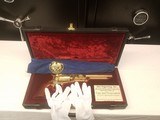 |
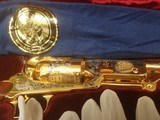 |
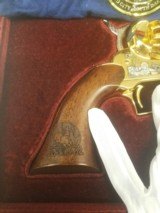 |
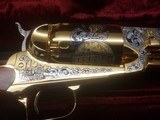 |
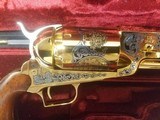 |
 |
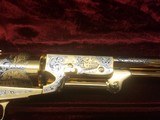 |
 |
 |
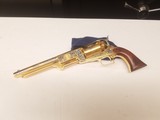 |
 |
 |
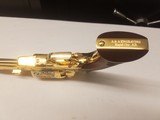 |
 |
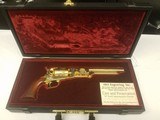 |

RENVILLE COUNTY, MINNESOTA HISTORIC COLT 1847 WALKER REVOLVER Dakota War Conflict Culture American Indian 1862 Sioux Uprising
Guns International #: 101447827 Seller's Inventory #: CS00106193000BL
Category: Uberti Rifles - Commemorative & Collectible Pistols
Seller's Information
When emailing or calling sellers direct, please mention that you saw their listing on GunsInternational.com
Seller: BrowningArmsColl
Company: Browning Arms Collections
Member Since: 11/30/13
First Name: Josh
Last Name: Sanders
State: Minnesota
Zip: 55044
Country: United States
Phone: (651) 233-8538
Fax:
Number of Active Listings: 0
Seller: FFL Dealer
Return Policy: 3 day inspection and return policy on used guns.
Payment Types Accepted: Postal Money Order, Certified Bank Check, Personal Check, Money Order
Description:
Rare Colt 1847 Walker 44 Commemorative Renville County Minnesota 2000. 1 of 10 engraved by A & A Engraving rapid City SD #9 of 10. Never fired mint condition. Provenance: Lower Sioux Dakota Elder Bob Larsen Collection. There are a total of 5 engraved commemorative firearms in this collection. (Renville County Pistol and Rifle, Blue Earth County Pistol and Rifle, and Sibley County Shotgun). Included with this is a copy of the art sketches, original purchase documents from A&A Engraving, and others documents.
From the description provided by A&A Engraving:
From the tip of the barrel to the base of the grip, this Renville County 44 Walker black powder revolver extends the story of how Renville County developed, and shows why it is still today a very progressive county in Minnesota. We engraved only ten revolvers and one Artist's Proof for Renville. The Walker revolver is a complementing piece to the Winchester Rifle created in 1999. This revolver is plated in 24 Karat Gold and is engraved and embellished with Nickel, 24 Kt. Antique Gold and black chrome. The Walker weighs just under five pounds and is nearly 16" long. Originally patented by Colt (1847), this piece is now produced by Uberti in Italy, holder of the 44 patent. It is an incredible revolver to engrave, and promises to be a great conversation piece for generations to come as well as a unique way of preserving the history of Renville County.
On the presentation (left) side of the cylinder is the original courthouse in Beaver Falls. Now a ghost town, Beaver Falls was once the county seat. This village peaked between 1866 and 1900 with 200 residents. Located just a rifle shot from Birch Coulee State Park, Beaver Falls was home to the county seat until 1900, losing the designation to Olivia. On the flat of the barrel, you see Dakota Chief Wabasha III. The Lower Sioux takes pride in its historic leaders that make up a great part of the history of the Upper Midwest. Wabasha III was the third in line of prominent chiefs of the Dakota nation. For over 100 years (1764-1876) the three chiefs acted as hereditary titular heads of the Mdewakanton band. On the bolster, you will see corn as the major agricultural crop of Renville County. Agriculture has been the mainstay of this county since the prairie pioneers came to settle the area. The backstrap is significant of granite mining. The oldest rock in the world, rainbow gneiss (granite) has been quarried for many years near Morton. Granite from this mine was used as a beautification project at the White House in the 60's. The grip of the revolver is one piece of wood, and has lasered a bison. Under the trigger guard, each piece is minted 01 of 10, 02 of 10 etc.
Turning to the right side, the beautiful Renville County courthouse located in Olivia, the county seat. Completed in 1902 at a cost of one hundred thousand dollars, this is still a great and mighty landmark for the area. The county was declared fullyanized in 1866, and was named after a French Canadian explorer and government interpreter Joseph Renville. Renville was also credited with assisting in translating the Bible into the Dakotah language. The flat portion of the barrel has engraved the Morton Hotel Local artist Dorothea Paul permitted us to use her rendition of this depot-hotel complex for our revolver project. The Morton hotel was known far and wide for its incomparable dining and lodging, and the Minneapolis and St. Louis Railroad line brought in the travelers. On the frame, the Birch Coulee Monument and two other well known obelisks are engraved. The Battle of Birch Coulee was the hardest Native American battle ever fought up to the Dakota Conflict of 1862, and was said to be the turning point of that conflict. On the morning of August 31, 1862, a company of nearly 100 men under Captain Grant, mostly all new arrivals at Fort Snelling and not trained for battle, a squad of cavalry under Captain Anderson and a group of scouts known as the Renville Rangers set our from Ft. Ridgely to bury the soldiers killed at the Redwood Ferry and the bodies of settlers on the prairie. The soldiers camped at Birch Coulee, and battle commenced at the break of day September 2 and lasted 32 hours. The soldiers were without food and water. Their ammunition was nearly exhausted. They were saved by the fact that their firing was heard at Fort Ridgely, sixteen miles away. Soldiers numbering 153 fought the battle, with 60 being wounded and 23 dead. This monument was dedicated in their honor. On the grip, a running white tail buck, wildlife native to the area.
My sources for the history of Renville County were many, but I owe a special thank you to Jamie and June, archivists at the Renville County History Museum in Morton. I have also quoted from the 'Battle of Birch Coulee' written by Robert Boyd, a survivor of the battle. Please forgive any errors in the history, which are mine. Enjoy your Renville County Revolver for years to come!
SOLD
Curio/Relic: Yes
Manufacturer: Uberti
Model: Colt 1847
Serial Number: 9